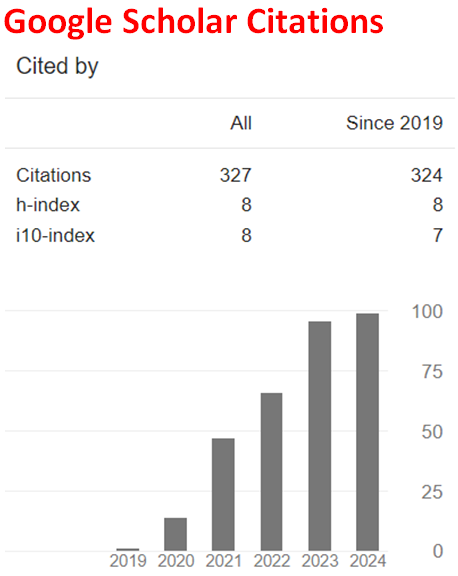Nanotechnology and Environment Study
Abstract
Nanotechnology has begun to be used to solve or at least mitigate environmental pollution problems, and in turn has provided a great opportunity to develop some strategies to protect the environment from pollution. Nanotechnology enables having the possibility to increase the efficiency of energy consumption, produce clean energy sources, solve the problem of water and air pollution and other environmental problems by developing new ways to provide and treat drinking water and discover air pollution. This stimulated the United Nations to pay attention to it and to monitor a plan to benefit from its applications in various fields. This paper reviews the impacts of nanotechnology on such environmental issues.
Downloads
References
Noha Al-Habashi, What is nanotechnology - a brief introduction in the form of simplified lessons, first edition, King Fahd National Library, Riyadh, Saudi Arabia, 2009
A. Keiper, The Nanotechnology Revolution, The New Atlantis (A Journal of Technology & Society), 2003. https://www.thenewatlantis.com/wp-content/uploads/legacy-pdfs/TNA02-Keiper.pdf
Muhammad Al-Salihi and Abdullah Al-Dowayan, Introduction to nanotechnology, Publication on the occasion of the Nano Research Workshop in Universities, Department of Physics and Astronomy, College of Science, King Saud University, Riyadh, Saudi Arabia, 2007.
B.C. Yadav and R. Kumar, Structure, properties and applications of fullerenes, International Journal of Nanotechnology and Applications 2 (2008), 15-24.
M.L. Cohen, Nanotubes, nanoscience and nanotechnology, Materials Science and Engineering C 15 (2001), 1-11. https://doi.org/10.1016/S0928-4931(01)00221-1
R.B. Gupta and U.B. Kompella, Fundamentals of drug nanoparticles, in: Nanoparticles Technology for Drug Delivery, Vol. 159, Taylor & Francis Group, New York, USA, 2006, pp. 1-19.
S.K. Sahoo, S. Parveen and J.J. Panda, The present and future of nanotechnology in human health care, Nanomedicine 3 (2007), 20-31. https://doi.org/10.1016/j.nano.2006.11.008
M.E. Ibrahim, Micro- and nano-biotechnology for applied pharmacognosy, PhD thesis, Nagoya-University, Tokyo, Japan, 2009, pp. 35-38.
M. Hosokawa, K. Nogi, M. Naito and T. Yokoym, Basic properties and measuring methods of nanoparticles, in: Nanoparticles Technology Handbook, 1st ed., Elsevier Linacre House, Oxford, UK, 2007, 511 pp.
P. Diwan and A. Bhardwaj, The Nanoscope Encyclopaedia of Nanoscience and Nanotechnology, Pentagon Press, USA, 2005.
K. Tiede, A.B. Boxall, S.P. Tear, J. Lewis, H. David and M. Hassellov, Detection and characterization of engineered nanoparticles in food and the environment, Food Additives and Contaminants 25 (2008), 795-821. https://doi.org/10.1080/02652030802007553
A.J. Kennedy, M.S. Hull, J.A. Steevens, K.M. Dontsova, M.A. Chappell, J.C. Gunter and C.A. Weiss, Factors influencing the partitioning and toxicity of nanotubes in the aquatic environment, Environmental Toxicology and Chemistry 27 (2008), 1932-1941. https://doi.org/10.1897/07-624.1
J.T. Au, G. Craig, V. Longo, P. Zanzonico. M. Mason, Y. Fong and P.J. Alien, Gold nanoparticles provide bright long-lasting vascular contrast for CT imaging, American Journal of Roentgenology 200 (2013), 1347-1351. https://doi.org/10.2214/AJR.12.8933
K.J. Ziegler, D.J. Schmidt, U. Rauwald, K.N. Shah, E.L. Flor, R.H. Hauge and R.E. Smalley, Length-dependent extraction of single-walled carbon nanotubes, Nano Letters 5 (2005), 2355-2359. https://doi.org/10.1021/nl0510208
R.D. Handy and B.J. Shaw, Toxic effects of nanoparticles and nanomaterials: implications for public health, risk assessment and the public perception of nanotechnology, Health, Risk & Society 9 (2007), 125-144. https://doi.org/10.1080/13698570701306807
D.D. Lucas and H. Akimoto, Contributions of anthropogenic and natural sources of sulfur to SO2, H2SO4(g) and nanoparticle formation, Atmospheric Chemistry and Physics Discussions 7 (2007), 7679-7721. https://doi.org/10.5194/acpd-7-7679-2007
D. Rejeski and D. Lekas, Nanotechnology field observations: scouting the new industrial west, Journal of Cleaner Production 16 (2008), 1014-1017. https://doi.org/10.1016/j.jclepro.2007.04.014
R.D. Handy, R. Owen and E. Valsami-Jones, The ecotoxicology of nanoparticles and nanomaterials: current status, knowledge gaps, challenges and future need, Ecotoxicology 17 (2008), 315-325. https://doi.org/10.1007/s10646-008-0206-0
P.A. Maurice and M. F. Hochella, Nanoscale particles and processes: a new dimension in soil science, Advances in Agronomy 100 (2008), 123-153. https://doi.org/10.1016/S0065-2113(08)00605-6
R.F. Domingos, N. Tufenkji and K.J. Wilkinson, Aggregation of titanium dioxide nanoparticles: role of a fulvic acid, Environmental Science & Technology 43 (2009), 1282-1286. https://doi.org/10.1021/es8023594
Y.S. Hwang and Q. Li, Characterizing photochemical transformation of aqueous nC60 under environmentally relevant conditions, Environmental Science & Technology 44 (2010) 3008-3013. https://doi.org/10.1021/es903713j
K. Tiede, S.P. Tear, H. David and A.B.A. Boxall, Imaging of engineered nanoparticles and their aggregates under fully liquid conditions in environmental matrices, Water Research 43 (2009), 3335-3343. https://doi.org/10.1016/j.watres.2009.04.045
C.E. Mackay, M. Johns, J.H. Salatas, B. Bessinger and M. Perri, Stochastic probability modeling to predict the environmental stability of nanoparticles in aqueous suspension, Integrated Environmental Assessment and Management 2 (2006), 293-298. https://doi.org/10.1002/ieam.5630020309
R. Owen and R. Handy, Formulating the problems for environmental risk assessment of nanomaterials, Environmental Science Technology 41 (2007), 5582-5588. https://doi.org/10.1021/es072598h
M. Farré, J. Sanchís and D. Barceló, Analysis and assessment of the occurrence, the fate and the behavior of nanomaterials in the environment, TrAC Trends in Analytical Chemistry 30 (2011), 517-527. https://doi.org/10.1016/j.trac.2010.11.014
X. Qu, P.J.J. Alvarez and Q. Li, Applications of nanotechnology in water and wastewater treatment, Water Research 47 (2013), 3931-3946. https://doi.org/10.1016/j.watres.2012.09.058
Dalia Mohamed Bassiouni, The nanotechnology revolution, 2014. http://kenanaonline.com/users/ahmedkordy/posts/320181
F. Boehm, Nanotechnology in environmental applications, Report NANO39A, BCC Research, Norwalk, 2006. http://www.bccresearch.com/report/NANO39A.html
R.K. Ibrahim, M. Hayyan, M.A. AlSaadi, A. Hayyan and S. Ibrahim, Environmental application of nanotechnology: air, soil, and water, Environmental Science and Pollution Research 23 (2016), 13754-13788. https://doi.org/10.1007/s11356-016-6457-z
Hassan J. Al-Hail, Tag-Eldin O. Sokrab, Nasir J. Al-Moslamani and Francisco R. Miyares, Hypothalamic hamartoma presenting with gelastic seizures, generalized convulsions, and ictal psychosis, Neurosciences 15(1) (2010), 43-45.

This work is licensed under a Creative Commons Attribution 4.0 International License.


